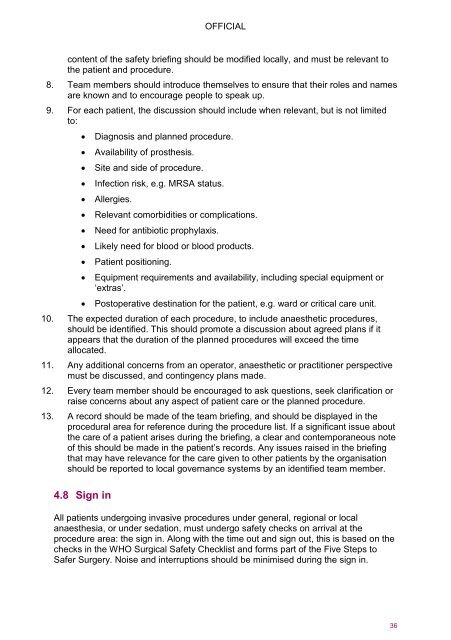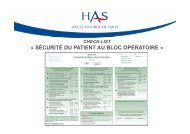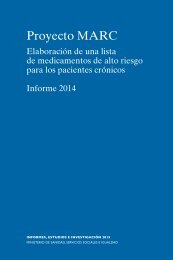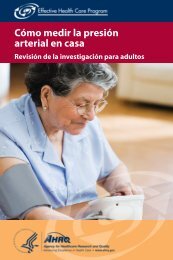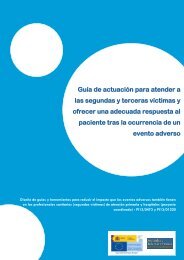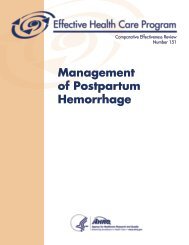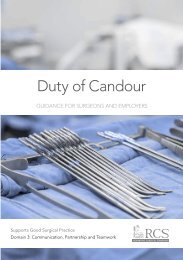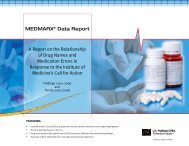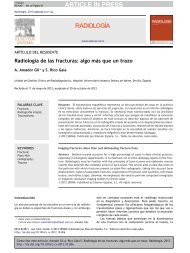for Invasive Procedures (NatSSIPs)
Z3q53
Z3q53
You also want an ePaper? Increase the reach of your titles
YUMPU automatically turns print PDFs into web optimized ePapers that Google loves.
OFFICIAL<br />
content of the safety briefing should be modified locally, and must be relevant to<br />
the patient and procedure.<br />
8. Team members should introduce themselves to ensure that their roles and names<br />
are known and to encourage people to speak up.<br />
9. For each patient, the discussion should include when relevant, but is not limited<br />
to:<br />
• Diagnosis and planned procedure.<br />
• Availability of prosthesis.<br />
• Site and side of procedure.<br />
• Infection risk, e.g. MRSA status.<br />
• Allergies.<br />
• Relevant comorbidities or complications.<br />
• Need <strong>for</strong> antibiotic prophylaxis.<br />
• Likely need <strong>for</strong> blood or blood products.<br />
• Patient positioning.<br />
• Equipment requirements and availability, including special equipment or<br />
‘extras’.<br />
• Postoperative destination <strong>for</strong> the patient, e.g. ward or critical care unit.<br />
10. The expected duration of each procedure, to include anaesthetic procedures,<br />
should be identified. This should promote a discussion about agreed plans if it<br />
appears that the duration of the planned procedures will exceed the time<br />
allocated.<br />
11. Any additional concerns from an operator, anaesthetic or practitioner perspective<br />
must be discussed, and contingency plans made.<br />
12. Every team member should be encouraged to ask questions, seek clarification or<br />
raise concerns about any aspect of patient care or the planned procedure.<br />
13. A record should be made of the team briefing, and should be displayed in the<br />
procedural area <strong>for</strong> reference during the procedure list. If a significant issue about<br />
the care of a patient arises during the briefing, a clear and contemporaneous note<br />
of this should be made in the patient’s records. Any issues raised in the briefing<br />
that may have relevance <strong>for</strong> the care given to other patients by the organisation<br />
should be reported to local governance systems by an identified team member.<br />
4.8 Sign in<br />
All patients undergoing invasive procedures under general, regional or local<br />
anaesthesia, or under sedation, must undergo safety checks on arrival at the<br />
procedure area: the sign in. Along with the time out and sign out, this is based on the<br />
checks in the WHO Surgical Safety Checklist and <strong>for</strong>ms part of the Five Steps to<br />
Safer Surgery. Noise and interruptions should be minimised during the sign in.<br />
36


